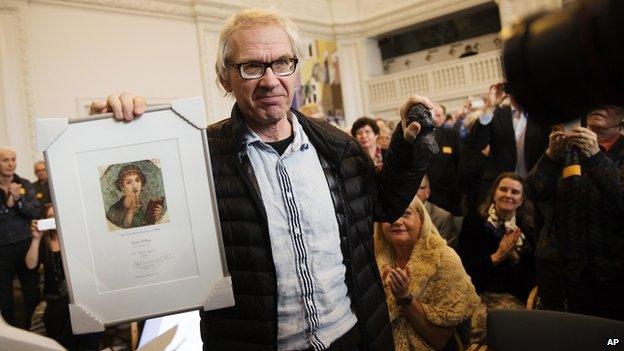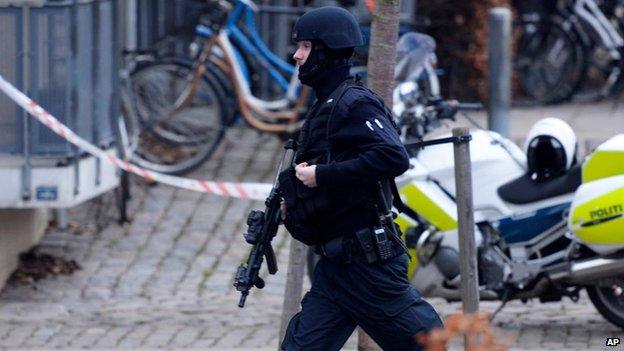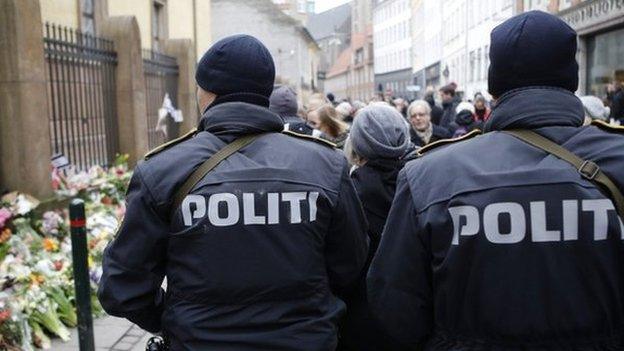Copenhagen attack cartoonist Lars Vilks wins award
- Published

Lars Vilks has been living under police protection in Sweden
A Swedish cartoonist who depicted the Prophet Muhammad as a dog has made his first public appearance since attending a debate that was targeted in a gun attack in Copenhagen last month.
Lars Vilks received a prize for courage from a free press group, at a heavily secured event in the Danish parliament.
His cartoon offended many Muslims and he now lives under guard in Sweden.
A radicalised gunman with gang links attacked the Copenhagen debate and a synagogue, killing two people.
A film-maker died in the shooting at a cafe hosting the free speech debate, while a guard was killed in the shooting outside the synagogue.
The gunman, Omar El Hussein, was later shot dead by police.
He had recently been released from prison but is not thought to have been part of a terror cell.

The attacks prompted a massive security operation in Copenhagen
Mr Vilks, who has been associated with the Swedish left, received the Sappho award from the right-wing Danish Free Press Society.
Receiving the prize, Mr Vilks said he had not aimed to become a symbol of freedom of speech.
"I am an artist and my artwork is probably difficult to understand. Many have tried to understand what that dog is about. But I don't even understand it myself.
"Some believe that it is a form of blasphemy, but I say that it is what art is all about. I show my things to the world and then the world must interpret it."
The armed security around the prize-giving - as well as its location in parliament - shows how much Denmark has changed since the February attack, says the BBC's Malcolm Brabant in Copenhagen.
Our correspondent says the show of force is something of a culture shock for what has been a peaceful and relatively secure country.
'Peace ring'
The BBC's Murad Batal Shishani was among the crowd at Copenhagen's Great Synagogue
Meanwhile, thousands of people from different faiths formed a human "ring of peace" outside the synagogue where a Jewish guard was shot dead by Omar El Hussein.
The Vilks cartoon was published in 2007, a year after a series of depictions of the Prophet Muhammad in Denmark's Jyllands-Posten paper prompted protests by Muslims around the world.
Most Muslims regard visual representation of the Prophet as blasphemous.
- Published18 February 2015

- Published15 February 2015

- Published8 January 2015
